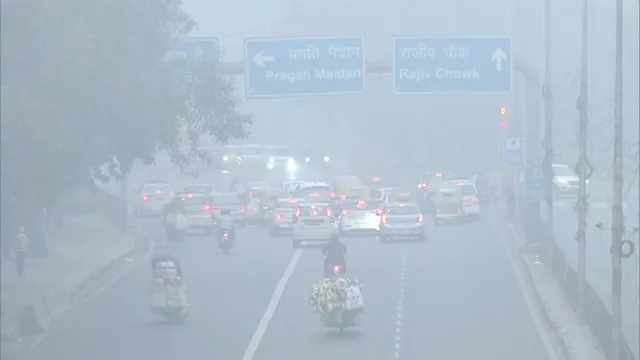- By Kamal Kumar
- Fri, 15 Nov 2024 10:29 AM (IST)
- Source:JND
Delhi AQI Today: Delhi's air quality plummeted to the 'severe' category on Friday, with AQI crossing the 400 mark at various places such as Anand Vihar, Nazafgarh, Pusa, and others, according to the Central Pollution Control Board. The city woke up to very dense fog, which reduced visibility. Due to the continuous rise in pollution levels, the Delhi government's GRAP 3 curbs are set to come into effect from 8 am Friday.
Under the Graded Response Action Plan-3, several measures will come into force, including a complete ban on construction activities, closure of schools across the national capital, suspension of BS-3 and BS-4 diesel vehicles from plying on Delhi roads, and a ban on major repairs.
What Are GRAP-3 Measures: Key Points
- The third phase of GRAP will take effect in NCR from Friday, 8 am.
- Complete ban on construction and demolition work across NCR under GRAP Phase III.
- Vehicles carrying construction materials are prohibited in NCR areas.
- BS-3 and BS-4 diesel vehicles are restricted from entering Delhi and NCR zones like Gurugram, Faridabad, Ghaziabad, and Noida.
- Only electric, CNG or BS-4 inter-state buses will be allowed in Delhi.
- Classes up to V are closed in Delhi, with online studies ongoing; higher classes remain open.
- GRAP III restricts painting, polishing, road construction, and major repairs.
- Transport of dust-producing materials like cement and sand is banned in NCR.
- New water, sewer, and underground cable work is halted during GRAP III.
- Machine-assisted road cleaning and pre-traffic water sprinkling are to be prioritised.
- Public transport is encouraged to reduce traffic emissions.
- BS-3 petrol and BS-4 diesel four-wheelers are grounded, affecting about five lakh cars.
- Violations of vehicle restrictions incur a Rs 20,000 fine; exceptions apply for emergency and government vehicles.
Meanwhile, Delhi's AQI hit 424 on Thursday, slightly up from 418 the previous day. It remains in a severe category with a high risk of lung and respiratory diseases. NCR cities also reported similar pollution levels due to adverse weather, emissions, and stubble burning.

